Black Locust
Robinia pseudoacia
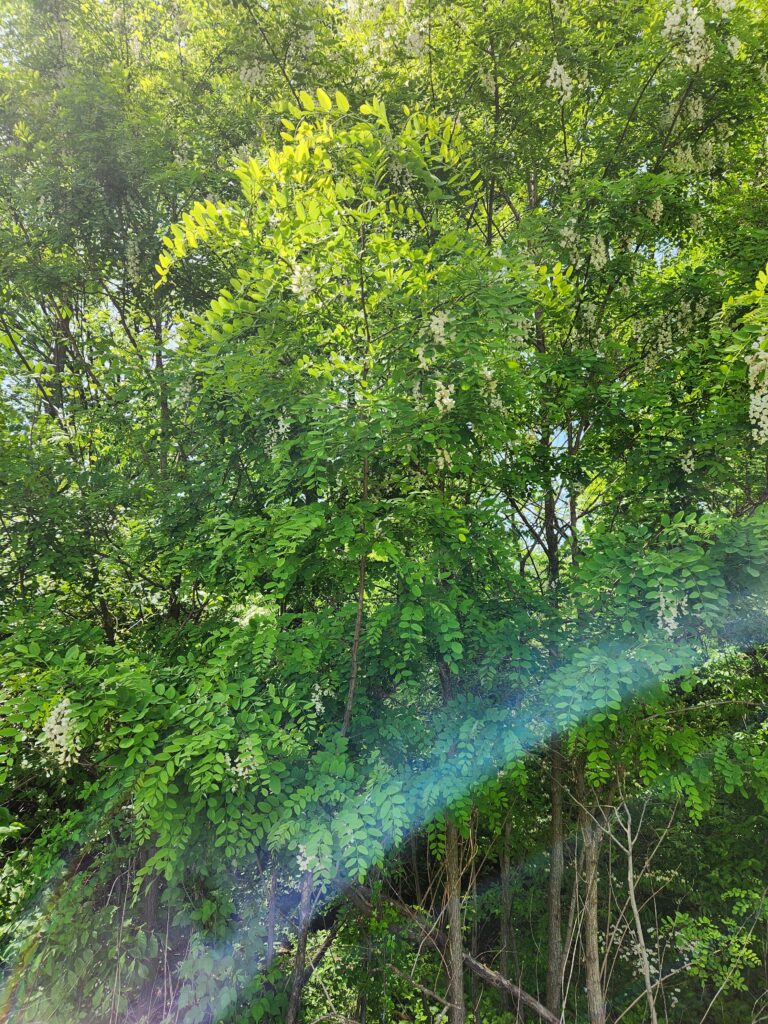
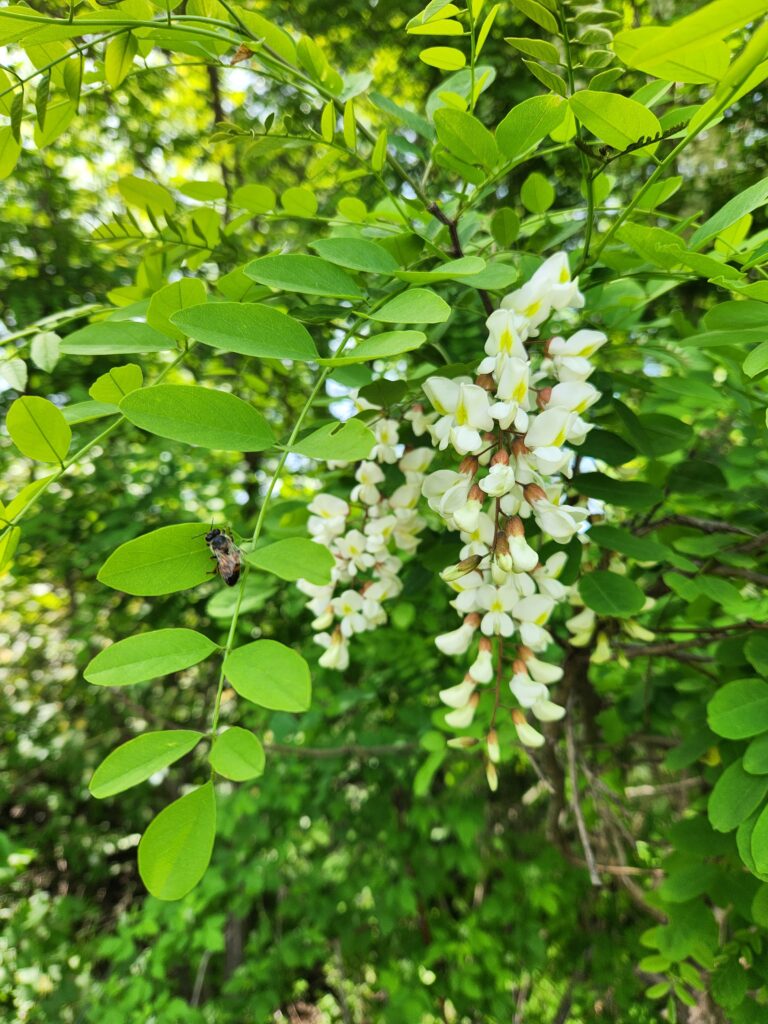
Black locusts are distinct trees that grow fast and readily due to their nitrogen fixation ability. When interplanted among farm crops, they are shown to boost crop growth. The leaves are alternate and pinnately compound with smooth blue-green leaflets. Inflorescences of white flowers in late spring grow in drooping racemes off of the branches. I found this tree on the edge of where a moist woodland area met farmland.
Black Locust: A Tree with Many Uses – Cornell Small Farms
Shagbark Hickory
Carya ovata
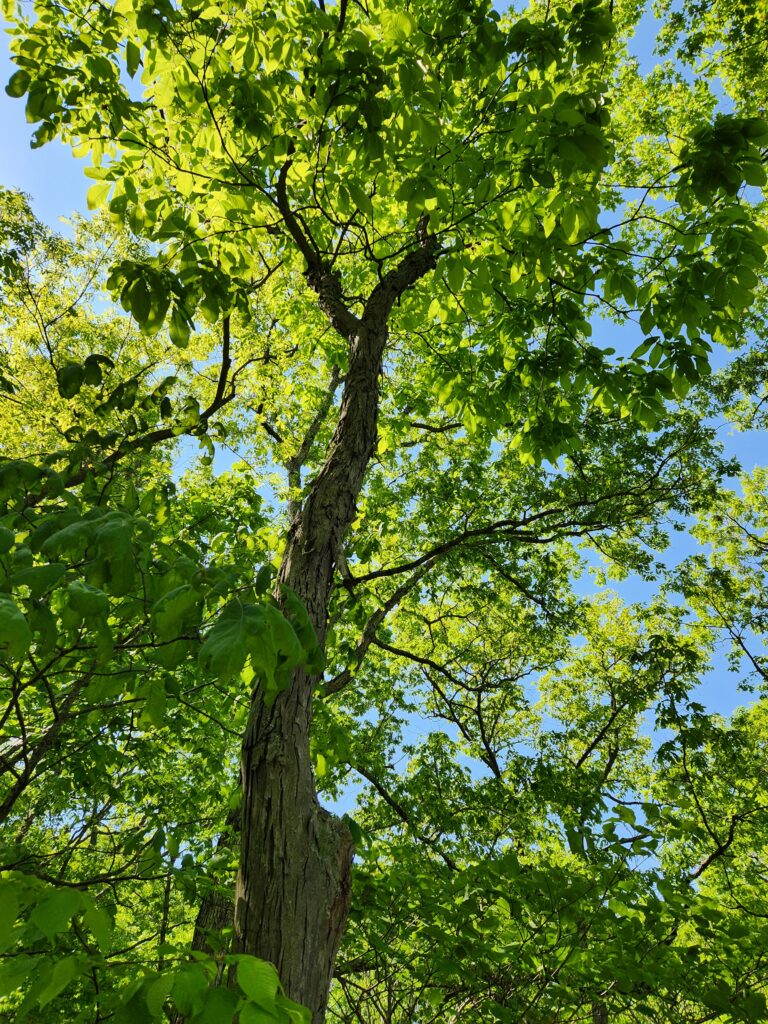

The Shagbark hickory is the most cultivated species of the genus. The nut was used by Native Americans to make a nutritious nut milk that was a diet staple. They have broad, alternate, and pinnately compound leaves, with bark that peels up to form long strips. The tree I found was in a bright spot in a woodland area at the beginning of a valley.
Shagbark Hickory | Department of Horticulture (uky.edu)
Tulip Poplar
Liriodendron tulipifera
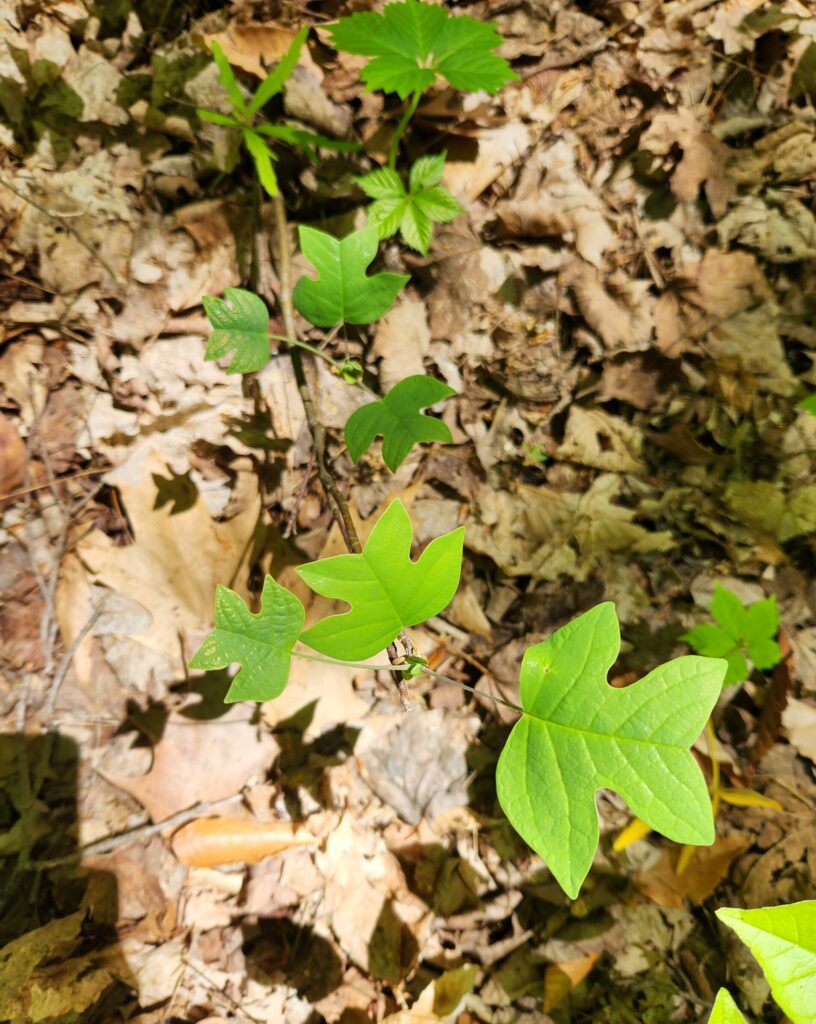
The tulip poplar is one of the largest growing trees in North America, often capable of growing to 120 feet in height. Their distinct alternating leaves are simple with four lobes, and in spring, the tree grows large, cup-shaped flowers that are green, yellow, and orange. The moment I first investigated those flower petals littering the ground on a trail at Hocking Hills, their image has never left my mind. I found this healthy sapling in a moist woodland area in a spot where sunlight shone through to the understory.
Hackberry
Celtis occidentalalis
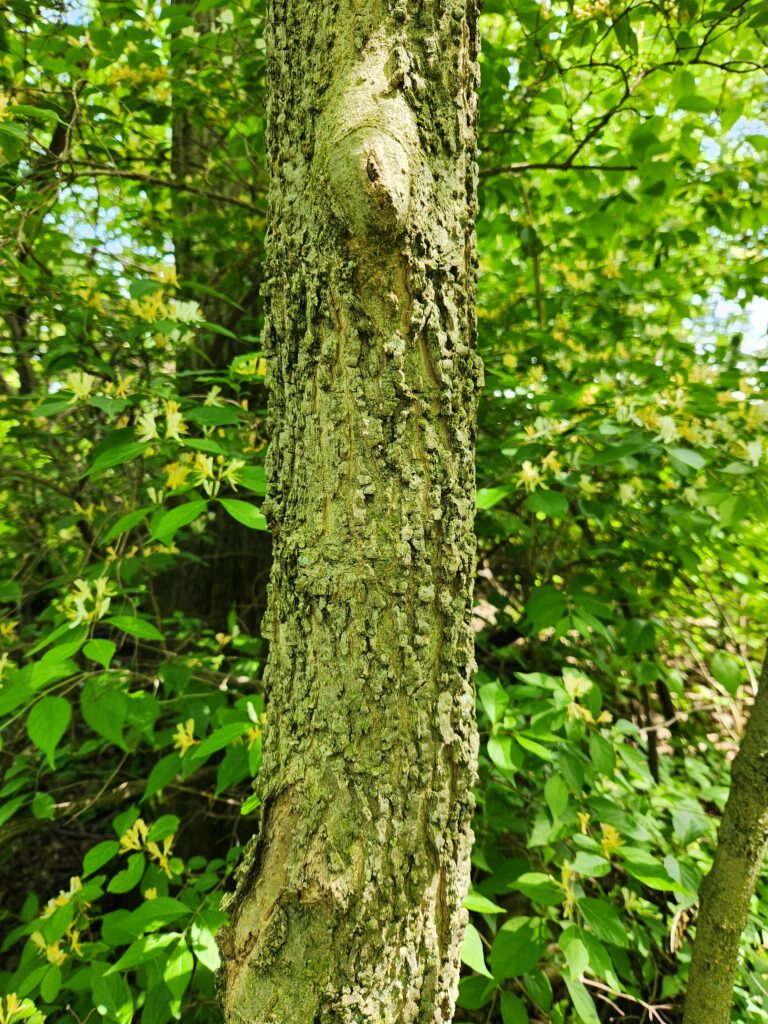
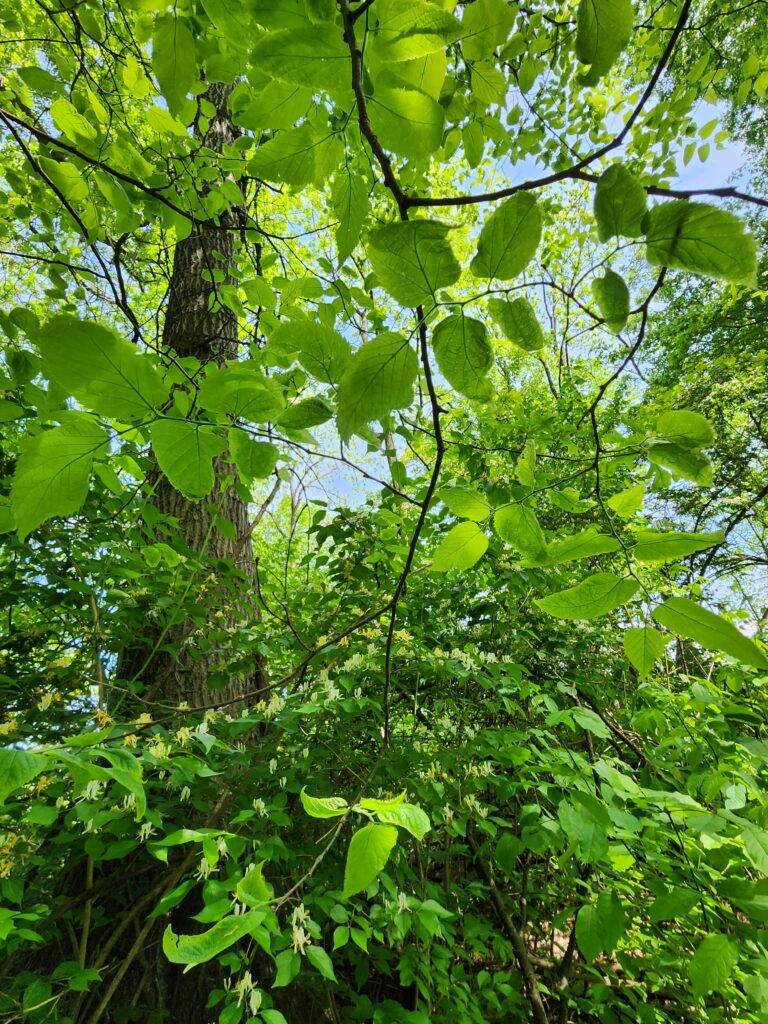
Hackberry trees produce small maroon fruits in the fall. Having been found in a 500,000-year-old tomb, said berries may be the earliest known plant food consumed by humans! I find that for myself, the greatest method to solidifying the identity of a tree (or any plant) in my mind is to engage with its edible parts. The first experience with a wild edible is always a lasting memory. Hackberry bark is distinctly warty and corky. Their leaves are alternate, asymmetrically lobed, and serrated. I discovered this tree in a moist woodland area.
Foraging and Cooking with Hackberries (Celtis occidentalis) (foragerchef.com)
American Hornbeam
Carpinus caroliniana
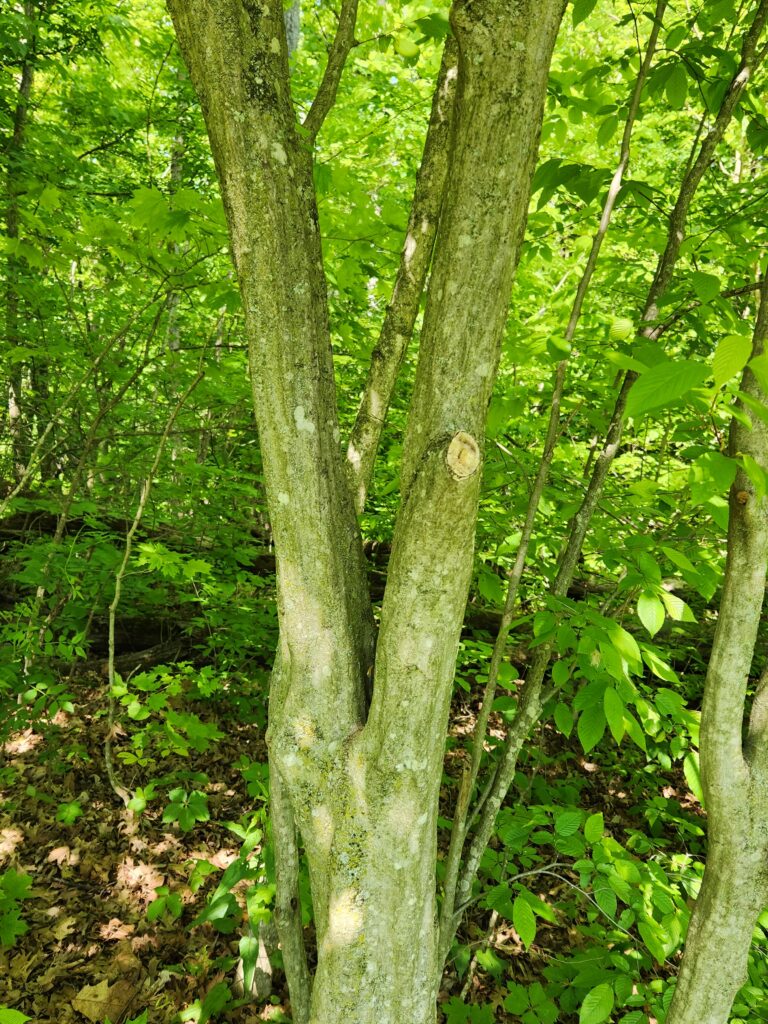

Hornbeam is the only tree of the Carpinus genus native to northeastern America. This tree has a grey trunk with distinct ridges that look oddly like muscles or tendons. The leaves are simple, alternate, and serrated. I’ve noticed that now that I’ve learned the names of muscle wood and hackberry, trees with bark so distinct, I wonder how I ever could not have recognized these unique trees any moment I’ve ever come across them. This specimen I saw growing at the edge of a woodland landscape.
American Hornbeam | Department of Horticulture (uky.edu)
Sweetgum
Liquidambar styraciflua
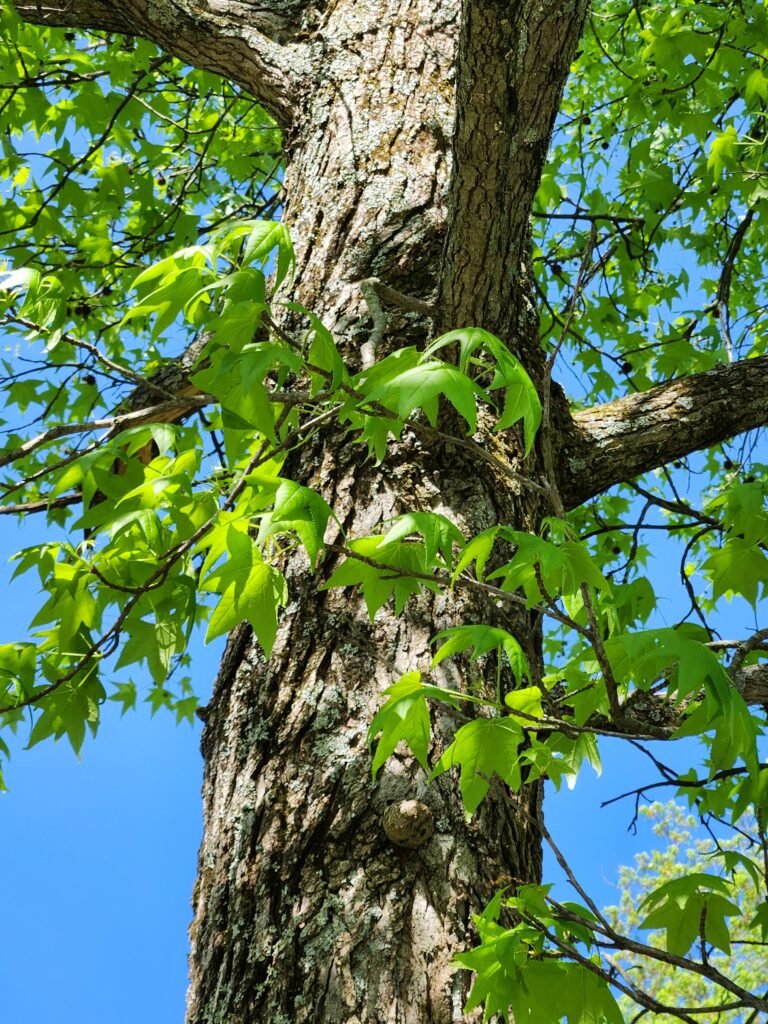
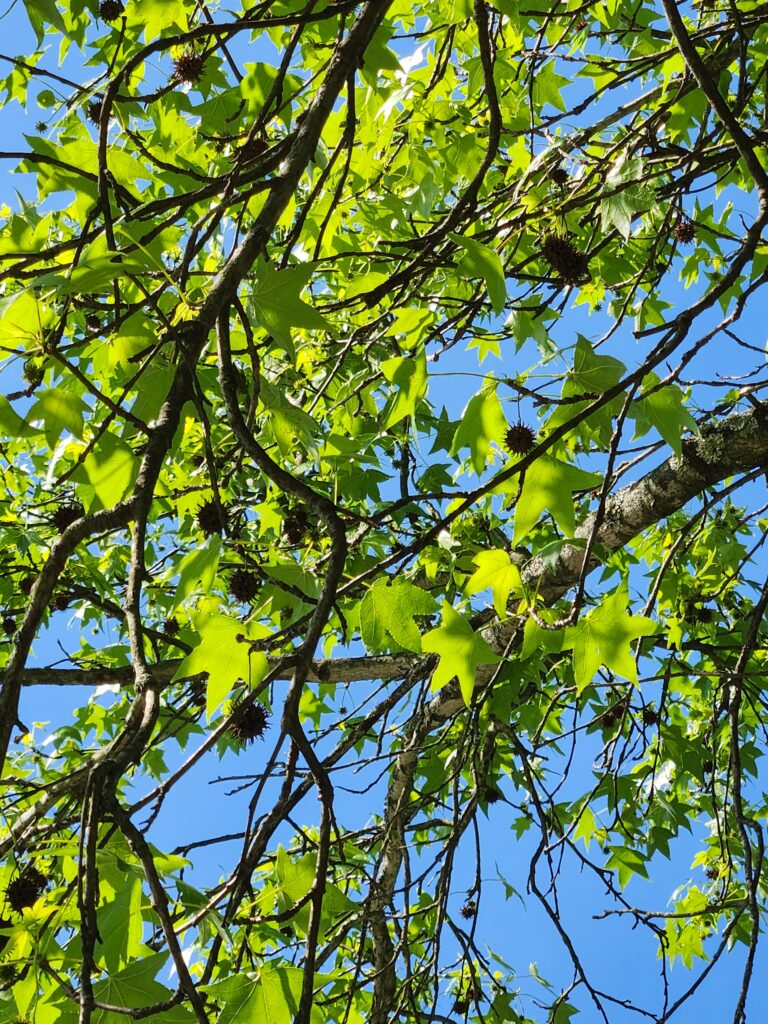
The sweetgum, a common source of lumber, also produces a resin that hardens and be made into chewing gum and medicines. The leaves are alternate; 5-sided and similar to a star, and they have hard, brown, and spiky fruits that look like little maces. Sweetgum was one of the first trees whose identity was sealed to me, as when I was a toddler, I got a spike-ball painfully lodged in my butt after going down a slide. As for this tree, I saw it growing in a bright spot at the edge of a forest.
American Sweetgum | Yale Nature Walk
Pawpaw
Asimina triloba

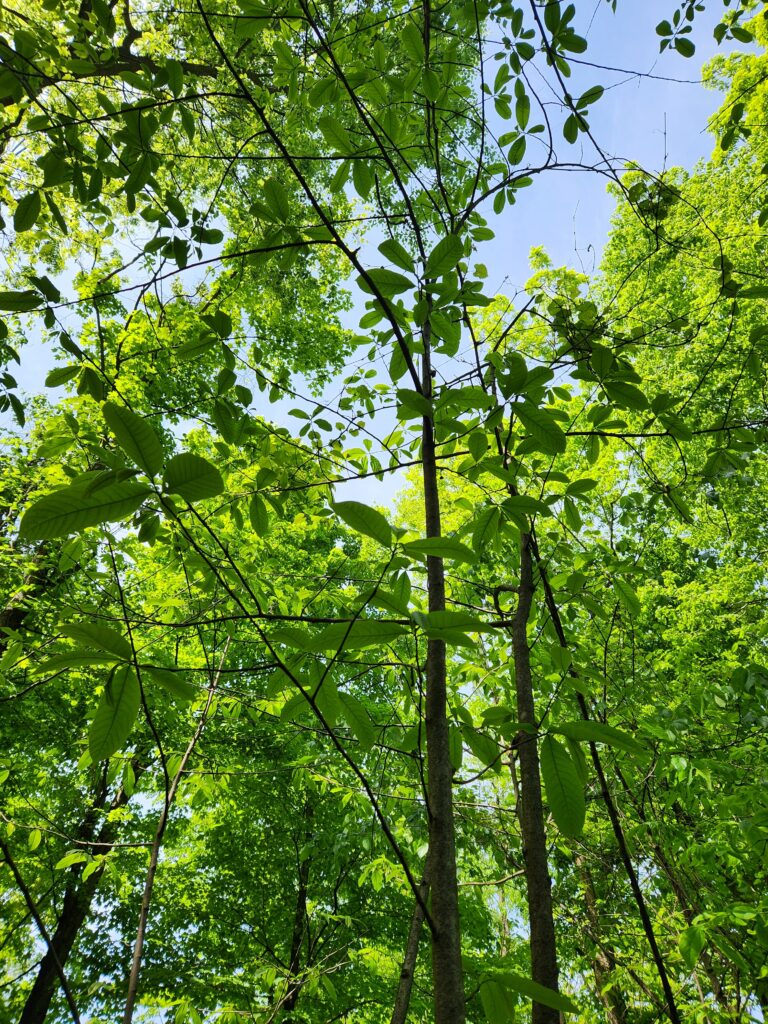
Pawpaw trees have great ecological and human value across their range in the Northeast, as often accounted for by their delicious fruits. The leaves, however, are also a vital food source to the zebra swallowtail and pawpaw sphinx moth in their larval stages. The leaves are simple and alternate, usually clustered at the end of branches. The bark is light-brown gray and smooth. I found this specimen in a moist and shady woodland area.
Pawpaw | Missouri Department of Conservation (mo.gov)
Northern Catalpa
Catalpa speciosa
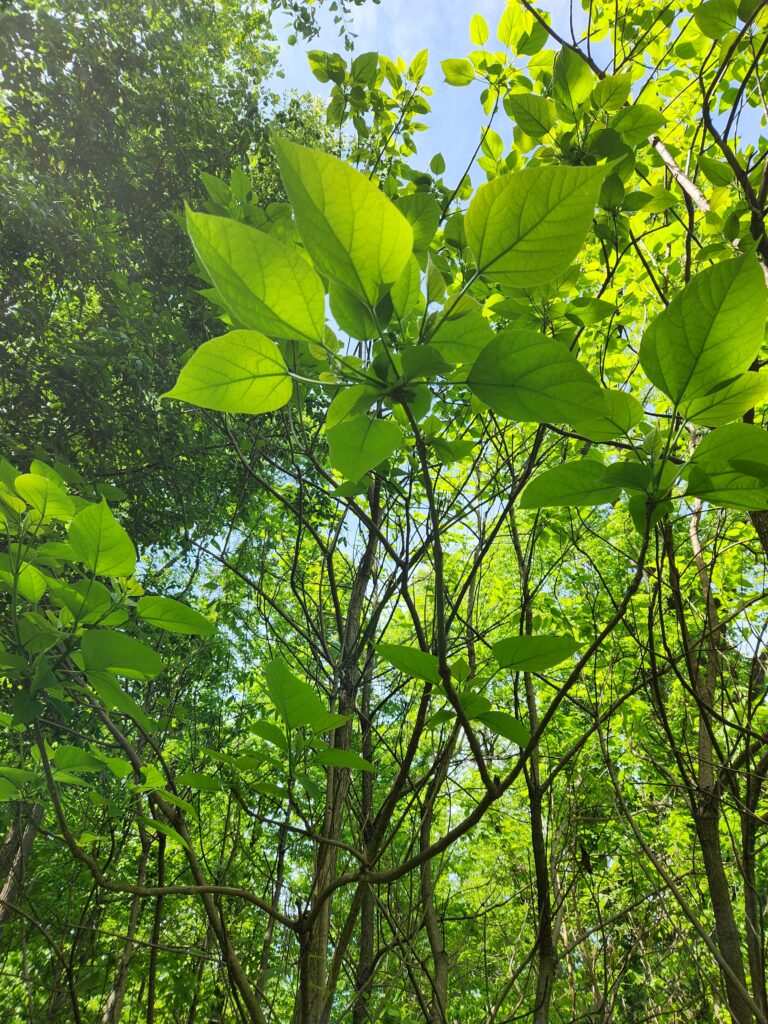
The northern catalpa is a tree that has been widely cultivated outside of its small native range in the Mississippi Valley Basin. The leaves are large, heart-shaped, and in a whorled arrangement. The bark is gray-brown and blocky. I found a stand of these trees beside a stand of papaws in a shady and moist woodland area.
Northern Catalpa | Ohio Department of Natural Resources (ohiodnr.gov)
